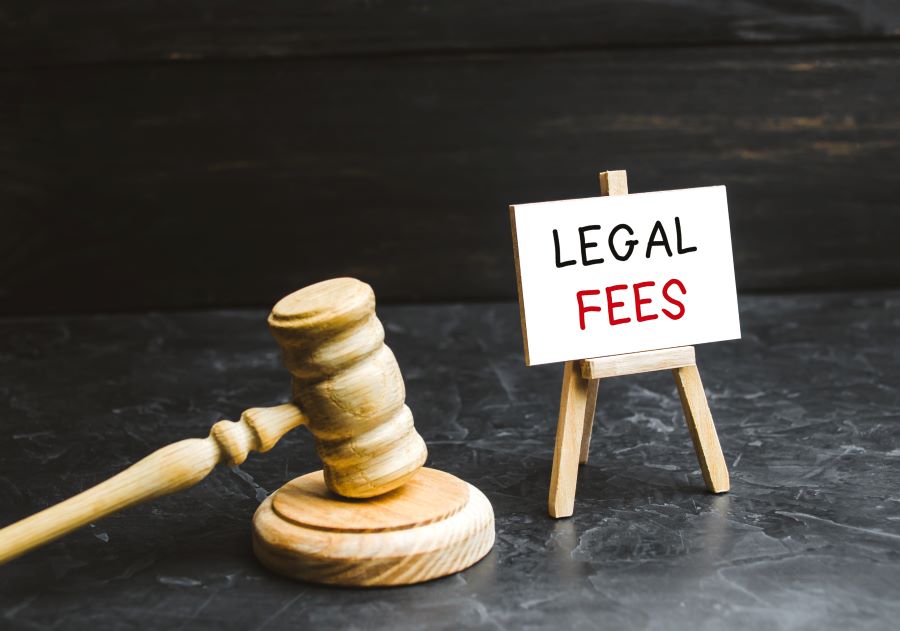Spotting Google Guidelines Violations. A pro perspective
Are you struggling to understand Google’s webmaster guidelines and concerned about the potential penalties for violating them? Don’t worry; we’ve got your back. We have deeply analyzed these guidelines to help you spot any violations and ensure your website operates within the recommended parameters, effectively avoiding any risks of penalization.
Spotting Google guidelines violations:
Spotting Google guidelines violations is crucial for maintaining a strong online presence and avoiding penalties. To adhere to Google’s Webmaster Guidelines, avoid practices like keyword stuffing, hidden text and links, cloaking, sneaky redirects, link schemes, and low-quality content. Regularly audit website content, monitor backlinks, and stay updated with Google’s latest developments to ensure compliance and improve search rankings.

Intrigued by the world of SEO and the elusive Google guidelines? You’re not alone! Dive deeper into the art of identifying violations and staying ahead in the competition. We’ve got loads more to share, so keep reading and become a Google guidelines guru.
Contents
- 1 Identifying Violations of Google Guidelines
- 2 Determining if Google Has Penalized You
- 3 Consequences of Breaching Google’s Policies
- 3.1 • Types of Policy Violations
- 3.1.1 – Consequences of Violating Google’s User Conduct Policy
- 3.1.2 – Consequences of Violating Google’s Unsafe Content Policy
- 3.1.3 – Consequences of Violating Google’s Spam and Deceptive Practices Policy
- 3.1.4 – Consequences of Violating Google’s Impersonation Policy
- 3.1.5 – Consequences of Violating Google’s Privacy Policy
- 3.2 • Responding to Policy Violations
- 3.3 • Preventing Policy Violations
- 3.1 • Types of Policy Violations
- 4 Actions that Breach Google’s Terms of Service
- 5 Rectifying a Violation of Google’s Policies
Identifying Violations of Google Guidelines
Spotting Google guidelines violations is essential for businesses striving to maintain a strong online presence, as failing to adhere to these policies could result in penalties or even removal from Google’s search results altogether.
• Google’s Webmaster Guidelines
Google’s Webmaster Guidelines are a set of principles and best practices designed to help website owners create user-friendly, high-quality content. These guidelines cover three main areas: technical and quality guidelines and the specifics of Google’s Webmaster Tools.
Familiarize yourself with Google’s Webmaster Guidelines to better understand the website qualities that Google rewards.
• Identifying Guideline Violations
– Keyword Stuffing
Keyword stuffing is the excessive use of target keywords within a webpage’s content, and it can result in a poor user experience. Google’s algorithms have been designed to detect this practice, and a website that employs keyword stuffing can face penalties.
To avoid this violation, ensure that your content reads naturally and includes relevant keywords used sparingly.
– Hidden Text and Links
Using hidden text or links in a webpage is deceptive, as it can skew search engine rankings and lead to a misleading user experience. For instance, using white text on a white background, setting font size to zero, or employing links in single characters are all examples of hidden text violations.
Google encourages websites to be transparent and straightforward, so make sure your website content is clear and visible to users.
– Cloaking and Sneaky Redirects
Cloaking refers to showing different content to search engines compared to what is visible to users. Sneaky redirects involve sending users, particularly mobile users, to different URLs than those intended. Both these practices are violations, as they provide a deceptive user experience.
Always ensure your website displays the same content to users and search engines, and avoid using redirects that may mislead users or negatively affect their experience.
– Link Schemes
Link schemes involve the manipulation of a site’s inbound links, and they can negatively impact a website’s ranking in Google’s search results. Examples of link schemes include buying or selling links, exchanging links excessively, or using automated programs to create links.
Avoid participating in any link schemes and focus on creating high-quality, relevant content that naturally earns credibility and inbound links.
– Thin or Low-Quality Content
One of Google’s primary goals is to provide users with valuable, high-quality results. Consequently, websites containing thin or low-quality content will likely be penalized in search rankings.
Websites featuring scraped content or spun articles, auto-generated content, or doorway pages are all examples of low-quality content violations. Instead, focus on creating unique, in-depth content that genuinely benefits users and meets the intent behind their search queries.
– User-Generated Spam
Some websites may unknowingly feature user-generated spam in the form of spammy comments, forum posts, or profiles. Google recommends regularly monitoring and addressing any spam content on your website.
Moreover, consider implementing anti-spam measures such as CAPTCHAs and comment moderation to minimize the risk of spam.
• Rectifying Violations
– Conduct a Content Audit
Regularly performing a content audit is crucial for spotting Google guidelines violations. Analyze your website’s content and structure, looking for potential issues like hidden text, cloaking, or keyword stuffing.
– Monitor Backlinks
Keep track of your website’s backlinks to identify and disavow any low-quality or spammy links that may have been acquired through link schemes or other violations. Use tools like Google’s Disavow Tool to submit a list of disavowed links to Google.
– Stay Updated
Google continually updates its algorithms and guidelines to provide the best search experience for users. Always stay updated with the latest developments, using resources like Google’s Webmaster Central Blog and participating in SEO communities to ensure your website adheres to current best practices.
• Conclusion
In conclusion, spotting Google guidelines violations can save your website from potential penalties and ensure you maintain a strong online presence.
By following Google’s guidelines, creating high-quality content, and addressing violations promptly, you can improve your search rankings and enhance the user experience.
Determining if Google Has Penalized You
• Recognizing Google Penalties
Being penalized by Google can severely impact your website traffic and revenues. Google considers numerous factors while ranking websites, and if your website does not adhere to its guidelines, it may be subject to a penalty.
It is important to identify the warning signs of a Google penalty to rectify it as soon as possible. Let’s dive into the major signs that indicate a Google penalty and possible solutions to get your website back on track.
• Sudden Drop in Website Traffic
One of the most noticeable indicators of a Google penalty is a sudden decline in site traffic. Keep an eye on your site’s analytics, especially after a Google algorithm update has rolled out, which Moz can track at Google Algorithm Change History.
If you observe an unexplained decrease in organic traffic and keyword rankings, it may be due to a penalty imposed by Google. Compare the time of the traffic drop with the dates of the algorithm updates to determine if your site has been affected.
Recommendation: Use tools like Google Analytics and Google Search Console to monitor your website’s performance and alerts to help identify any issues related to penalties.
• Manual Action Message from Google
One of the easiest ways to know if your website has been penalized is by checking for notifications in Google Search Console. Google often sends a manual action message if your website violates its guidelines. The message will state the reason and steps to fix the issue.
Recommendation: Regularly monitor the messages in the Google Search Console to keep your website in compliance with Google’s guidelines.
• Deindexed or Broken Links
If your web pages have been removed from Google’s index completely or important internal/external links on your site are broken or pointing to irrelevant sources, it could be a sign of a penalty. When your site pages are not indexed, they are not displayed in search results, leading to a loss in traffic.
Recommendation: Use the “site:” search operator in Google followed by your domain to check the indexed pages. For example, site:example.com. This search will display all indexed pages for your domain.
• Decrease in Keyword Rankings
A sudden drop in keyword rankings is another indicator of a potential penalty. A decline in keyword rankings is usually the result of algorithmic penalties like Google’s Penguin (linked to low-quality backlinks) or Panda (related to low-quality content) updates.
Recommendation: Use keyword tracking tools like Google Search Console or SEMrush to monitor your keyword rankings and identify any significant changes.
• Types of Google Penalties and Recovery Steps
Based on the indicators mentioned above, if you conclude that your website has been penalized by Google, it’s essential to identify the type of penalty and implement recovery measures. Following are the common types of Google penalties and suggested recovery steps:
- Penguin Penalty (Unnatural backlinks): This penalty is applied to websites engaged in manipulative link-building practices.
Recovery Steps: Disavow harmful backlinks using Google’s Disavow Tool, remove the low-quality backlinks, and focus on building natural and high-quality links.
- Panda Penalty (Low-quality content): This penalty affects websites with low-quality, duplicate, or thin content, impacting their search engine rankings.
Recovery Steps: Remove or improve thin content, avoid keyword stuffing and duplicate content, and create high-quality, valuable, and original content for your audience. - Manual Penalties: These penalties are imposed by Google’s webspam team if they observe that your website violates their Webmaster Guidelines.
Recovery Steps: Analyze the manual action message and address the issues mentioned, submit a reconsideration request to Google after fixing the problems, and focus on following the webmaster guidelines in the future. - Mobile-first Indexing Issues: Google prioritizes mobile versions of websites for indexing and ranking. If your website isn’t mobile-friendly, it may result in lower rankings and traffic.
Recovery Steps: Implement a responsive website design, improve website performance and loading time on mobile devices, and ensure content is consistent across desktop and mobile versions. - Other Algorithmic Penalties: There are several other specialized algorithms updates, like the Medic update (focused on health-related websites) or the Page Experience update (focused on user experience elements).
Recovery Steps: Regularly monitor your website’s performance in line with the specific algorithm update and make necessary improvements to comply with Google’s guidelines. - Structured Data Penalty: This penalty is applied when Google detects spammy or misleading structured data on your website.
Recovery Steps: Review and fix any issues with your website’s structured data, remove spammy or misleading markup, and ensure proper implementation of structured data following Google’s guidelines.
In conclusion, it’s crucial to be aware of the signs of a Google penalty and take corrective actions quickly to restore your website’s rankings and traffic. Always adhere to Google’s Webmaster Guidelines and best practices to maintain your website’s search engine visibility and avoid any penalties in the future.
Remember, the key to success in search engine optimization (SEO) is providing high-quality and valuable content to your users while focusing on a great user experience.
| How do you know if you have been penalized by Google? | |
|---|---|
| 1. Check Google Search Console | Look for penalty notifications or manual actions under the “Security & Manual Actions” section. |
| 2. Analyze Your Organic Traffic | Monitor your organic traffic in Google Analytics to identify any sudden drops in traffic that may indicate a penalty. |
| 3. Monitor Your Keyword Rankings | Use tools like Google Search Console, SEMrush or Ahrefs to track your keyword rankings and look for significant drops in your search positions. |
| 4. Inspect Your Backlinks | Look for unusual patterns in your backlinks, such as sudden spikes in low-quality or spammy links, which may indicate a negative SEO attack and a potential penalty. |
| 5. Audit Your Website’s Content | Ensure your website’s content is of high quality, unique, and follows Google’s Webmaster Guidelines to avoid potential penalties. |
| 6. Consult With SEO Professionals | If you’re unsure if you’ve been penalized, consult with an SEO professional or agency to help identify and resolve potential issues. |
Consequences of Breaching Google’s Policies
Google’s policies are designed to ensure a safe, reliable, and user-friendly environment for everyone on the platform. Violating these rules may result in your account or your content being temporarily or permanently suspended from using Google’s services.
• Types of Policy Violations
There are several categories of policy violations that Google actively enforces. Some of the primary categories include:
- User Conduct: Inappropriate behavior, harassment, or impersonation of others.
- Unsafe Content: Sharing or promoting content that causes harm or distress, such as violent or explicit material.
- Spam and Deceptive Practices: Sending unwanted or misleading information, phishing attempts, or engaging in fraud.
- Impersonation: Pretending to be someone else, usually with malicious intent.
- Privacy Violations: Sharing or collecting personal information without consent.
– Consequences of Violating Google’s User Conduct Policy
If you engage in inappropriate behavior, harassment, or impersonation, it may result in temporary or permanent action on your account. Google defines inappropriate behavior as harmful, offensive, disruptive, or defamatory actions. Harassment may include bullying, threatening, or other types of harmful communication.
Recommendation: Always conduct yourself respectfully when interacting with others, whether it be through comments, emails, or shared content.
– Consequences of Violating Google’s Unsafe Content Policy
Sharing or promoting content that violates Google’s Unsafe Content policy can lead to temporary or permanent suspension from their services. This policy covers adult content, violence or harm, graphic or explicit materials, and content that incites hatred.
Recommendation: If you come across unsafe content, report it to Google rather than sharing or promoting it further.
– Consequences of Violating Google’s Spam and Deceptive Practices Policy
Engaging in spammy or deceptive practices will result in disciplinary action being taken on your account. This includes sending unsolicited messages or promoting content that is misleading or fraudulent. Phishing attempts and scams also fall under this category.
Recommendation: When promoting content or engaging with others, ensure that your actions are honest, transparent, and adhere to Google’s guidelines.
– Consequences of Violating Google’s Impersonation Policy
Impersonating someone else on any of Google’s platforms may lead to temporary or permanent account removal. This includes using someone else’s identity, images, or personal information without permission.
Recommendation: Always represent yourself accurately on Google’s platforms and respect the identities of others.
– Consequences of Violating Google’s Privacy Policy
Sharing or collecting personal information without proper consent will lead to action taken against your account. This may include temporary or permanent suspension, depending on the severity of the violation.
Recommendation: Only collect or share private information when you have received clear consent and for a legitimate purpose.
• Responding to Policy Violations
You may receive a warning or direct action against your account if you have violated Google’s policies. Depending on the violation, you may have the opportunity to appeal the decision or correct the issue to reinstate your access to Google’s services.
– Appealing a Policy Violation
If you believe that Google’s action against your account is unwarranted, you can submit an appeal for their review. To do this, follow the appropriate procedure outlined on Google’s Help Center.
– Correcting a Policy Violation
For some policy violations, Google may provide the opportunity for you to correct the issue and regain access to their services. This may involve removing or editing the violating content, changing misleading information, or submitting proof of identity.
Recommendation: If given a chance to correct a policy violation, take swift action to address the issue and avoid future complications.
• Preventing Policy Violations
The best way to avoid consequences for violating Google’s policies is to stay informed about their guidelines and adhere to those rules. Keep yourself updated on any policy changes, and take the time to understand how they apply to your activities on Google’s platforms.
Recommendation: Regularly review Google’s policies and guidelines to ensure that you are in compliance and maintain a positive presence on their platforms.
In conclusion, adhering to Google’s policies is essential to maintain access to their services and avoid temporary or permanent suspensions. Stay informed about their guidelines, conduct yourself respectfully, and address any violations promptly to keep your account in good standing.
Actions that Breach Google’s Terms of Service
Google’s Terms of Service (ToS) dictate how users may interact with Google products and services. Violating these terms could result in penalties such as losing access to a Google account or even facing legal consequences.
• Misusing Google Account
One of the primary reasons individuals may violate Google’s ToS is by utilizing their account for purposes beyond its intended use or sharing it with others improperly. Key misuse behaviors include:
– Creation of Multiple Accounts
Creating multiple Google accounts for deceptive purposes, or using different identities, is against Google’s policies. However, there are legitimate reasons to have separate accounts, such as managing work or personal information separately.
– Unapproved Data Access & Sharing
Allowing unauthorized users to access a Google account, or share your login credentials with others, is not only against Google’s ToS but also poses a significant security risk.
– Impersonation & False Representation
Creating an account that impersonates someone else or falsely represents an organization is a violation of Google’s ToS. Ensure only accurate personal or professional details are being used while creating an account.
• Content Policy Violations
Google takes the content published on its various platforms seriously. It is essential to adhere to the guidelines and refrain from publishing prohibited content. Violations areas include:
– Publishing Explicit Material
Sharing explicit or sexually explicit content, including images or videos, is against Google’s content policies. Moreover, content that exploits, harasses, or endangers minors is strictly prohibited.
– Hate Speech & Harassment
Google does not tolerate content that promotes hatred, violence, or discrimination based on factors like race, ethnicity, or religion. Additionally, harassing, threatening, or intimidating users is a breach of Google’s content policies.
– Promoting Illegal Activity
Content that promotes or facilitates illegal activities, such as drug usage, human trafficking, or the distribution of copyrighted materials without authorization, is strictly prohibited.
– Spamming & Phishing
Google strictly forbids using its services to send spam, conduct phishing attacks, or distribute malware. This policy encompasses emails, comments, and user-generated content on platforms like Google Drive or Google Groups.
• Abusing Google’s Technology & Infrastructure
Google’s technology and infrastructure should only be used for its intended purposes. Any attempts to undermine or manipulate these systems could be considered a violation of the ToS.
Accessing Google services without proper permission, for instance, bypassing security measures, or using the services to gain unauthorized access to other systems, is considered a violation.
Making unauthorized modifications to Google services, tampering with their functioning, or interfering with other users’ activities is against Google’s policy. This includes actions such as reverse engineering or attempting to extract source code from Google’s products.
• Compliance with Third-Party Policies
Google services often require users to agree to third-party terms and conditions. Not adhering to these terms may affect a user’s ability to maintain access to Google services. Examples of third-party policies include:
– Copyrights & Intellectual Property
Infringing on the copyrights or intellectual property of others could lead to a violation of both Google’s ToS and applicable laws. Ensure that only original or appropriately licensed content is published or shared using Google services.
– Privacy & Data Protection
When using Google services that process personal data, complying with applicable privacy and data protection regulations is essential. Review guidelines such as GDPR, CCPA, or HIPAA to maintain compliance.
• Consequences of Violating Google’s ToS
Violating any of Google’s Terms of Service can result in a range of consequences, such as:
- Loss of access to specific services or features
- Suspension or termination of the Google account
- Legal ramifications based on the severity of the violation
It is crucial to review and adhere to Google’s ToS and relevant policies, such as the https://policies.google.com/[Google Privacy Policy]. By doing so, users can prevent causing inadvertent violations and protect their access to Google services.
Rectifying a Violation of Google’s Policies
Google’s policies and guidelines are designed to create a safe and positive experience for advertisers, publishers, and users. However, there may be instances where you unknowingly (or knowingly) violate one of these policies.
In such cases, addressing and fixing these violations is crucial to ensure your account remains in good standing with Google.
• Identifying Google Policy Violations
Google’s policy violations can occur across multiple platforms, including Google Ads, Google AdSense, Google Play, YouTube, and more. To identify if you have violated any policy, keep an eye out for communications from Google.
Typically, Google will notify you through email or within each platform’s dashboard if there’s a policy violation. These notifications will contain information about the specific policy, violated content, and possible consequences.
Addressing these messages promptly is critical to avoid any potential account suspensions or other penalties.
For more information on Google’s specific policies and guidelines, refer to Google’s support pages for each platform.
• Understanding the Consequences of Policy Violations
Depending on the severity and frequency of the policy violation, Google may take varying levels of action. Some potential consequences include:
- Disapproval of ads, content, or apps
- Limited ad serving or suspension of app distribution
- Lowered ad rank or app visibility
- Account suspension or termination
Repeated violations might lead to more severe penalties and, in some cases, a permanent ban from using Google’s services. Therefore, taking the appropriate actions to fix a policy violation is crucial for maintaining a good relationship with Google and ensuring continued access to its platforms.
• Fixing Google Policy Violations: Step-by-Step Guide
– Step 1: Review and Understand the Policy Violation
Before you can fix the policy violation, you must understand the specific policy and why your content or ads violated it. Carefully review the policy details in Google’s notification or refer to their support pages for more information.
Be sure to understand the underlying reasons for the violation so that you can address it effectively and avoid future issues.
– Step 2: Take Corrective Action on Violated Content or Ads
After understanding the violation, take the necessary steps to fix it. Some common corrective actions include:
- Removing or editing content that violates Google’s guidelines
- Modifying ad targeting, text, or images to comply with policy
- Updating app functionality or metadata to meet Google Play requirements
- Implementing necessary changes on your website, such as Privacy Policy or Terms of Service updates
Ensure that your corrective actions directly address the policy violation and comply with Google’s guidelines.
– Step 3: Submit Materials for Review (If Required)
In some instances, you may be required to submit your updated content or ads for review before they can be reinstated. Follow the instructions provided in Google’s notification or platform dashboard to submit your materials for review.
Make sure to adhere to any specific requirements, such as submission timeframes or necessary documentation.
– Step 4: Monitor Your Account for Policy Compliance
After addressing the policy violation and submitting your revised content or ads, monitor your account to ensure that your changes have been accepted and the issue resolved. Keep an eye on your account’s dashboard or email communications from Google for any further notifications or feedback.
Additionally, regularly review Google’s policy updates and best practices to maintain ongoing compliance and reduce the risk of future violations.
• Frequently Encountered Violations and Recommended Actions
Here are some common Google policy violations and recommended actions to fix them:
– Google Ads: Misleading Content or Clickbait
Recommended Action: Edit your ad text and images to represent your products or services accurately. Avoid using exaggerated claims, false promises or clickbait tactics.
– Google AdSense: Invalid Traffic or Clicks
Recommended Action: Investigate the source of invalid traffic or clicks and take steps to prevent them, such as implementing filters or blocking suspicious IP addresses.
– Google Play: Intellectual Property Violations
Recommended Action: Remove any copyrighted or trademarked materials from your app or obtain proper permissions from the rights holder. Ensure your app does not infringe on others’ intellectual property rights.
– YouTube: Violent or Graphic Content
Recommended Action: Remove any violent or graphic content from your video or apply proper age restrictions in accordance with YouTube’s guidelines.
• Conclusion: Maintaining a Proactive Approach to Policy Compliance
Fixing Google policy violations is essential for avoiding penalties and maintaining a healthy account.
You can ensure a healthy and successful relationship with Google and its platforms by proactively staying informed about Google’s guidelines, regularly reviewing your content and ads, and taking timely corrective action when needed.







